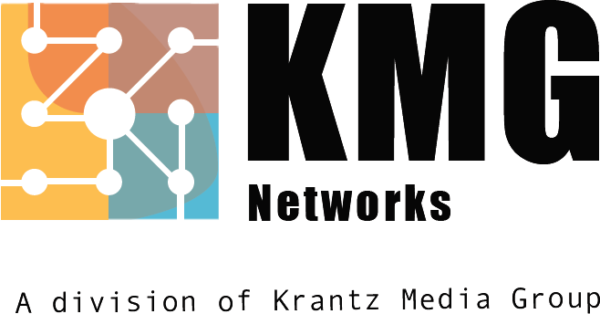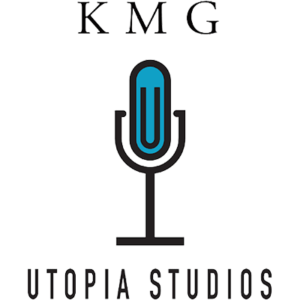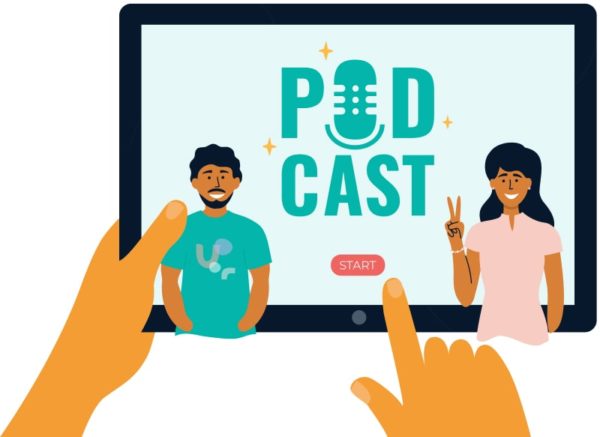 As we know, podcasts are rapidly growing as a medium in recent years. In 2018 Apple and FastCompany stated that there were over 525,000 podcasts all over the world. Today? It’s over 2 million podcast shows with more than 48 million episodes in total, showing a very rapid growth in just three years.
As we know, podcasts are rapidly growing as a medium in recent years. In 2018 Apple and FastCompany stated that there were over 525,000 podcasts all over the world. Today? It’s over 2 million podcast shows with more than 48 million episodes in total, showing a very rapid growth in just three years.
In today’s very fast-paced, knowledge-hungry society, podcasts offer a significant benefit over other primary mediums like text-based content and videos: we can listen to podcasts while doing other activities since we don’t use our eyes. It’s, for example, dangerous to read a blog post or watch a YouTube video while driving or when lifting the dumbbell in the gym, but that’s not the case with podcasts.
We are shifting from “seeing is believing” to “hearing is knowing”: podcasts offer a chance for us to consume information, gain valuable knowledge, and even learn new skills anytime and anywhere.
This is why over half of American homes nowadays are actively listening to podcasts and over 20% of the American population tune in at least once every week.
With that being said, it’s definitely a great time if you are currently looking to start a podcast, but many people are discouraged because they simply don’t know where to start.
If you are currently in that situation, you are definitely not alone, and you’ve come to the right place.
In this guide, we will discuss:
- What equipment will you need to start your own podcast show?
- How much in startup investment will you need
- What topic should you cover?
- How to get your listeners?
And more.
So, without further ado, let’s get started right away.
Start With Why
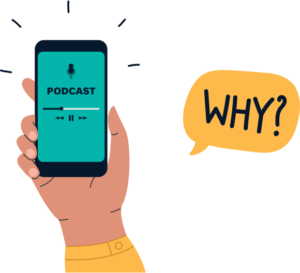 Why do you want to start a podcast in the first place?
Why do you want to start a podcast in the first place?
There can be various valid reasons here. Probably you are simply looking to get famous and hopefully, the show will go viral. This is a perfectly valid reason. Or, maybe you already have an established business and you want to start a podcast to support the business by engaging your target audience with valuable content.
Or, probably you are simply good at something and just want to share your knowledge with your audience.
It’s important to first identify your reason. Not only can it help you in deciding which audience to target and what kind of podcast show to create, keeping your “why” in mind can help you stay motivated throughout the potentially rough journey.
Identifying Your Target Audience
A common misconception is to think that only people and businesses that already have an audience (at least a few) are capable of starting a successful podcast show.
While this certainly can help, many successful podcasters start from nothing with literally 0 audiences. Many people simply don’t care if they’ve never heard of you before if your podcast episode seems interesting.
However, if you already have a bit of an audience (or a lot), then you can analyze your existing audience as the basis of your podcast’s planning stage. Figure out their demographics data, location, interests, behaviors, and pain points. You can conduct surveys and/or interviews where you can also ask what other podcast shows (if any) they often listen to.
Above anything else, it’s crucial to figure out who your podcast is for when planning the show and its content. You need to give your target audience a reason to listen to your podcast. We’ll discuss more of this in the next step.
Your Podcast’s Selling Points
Design a reason why people will listen to your podcast, which can be:
- Providing valuable information and tips
- Interviews with famous people
- Pure entertainment, for example, comedy and banter
- Unique opinion about something
And more. Your imagination is the only limit.
It’s crucial not only to give your target audience a reason to listen to your episode but also how to keep them back for more.
A great way to start is to write down a list of 10 to 20 potential episodes while considering the selling point of each.
Decide on a Show Name
The next step is to decide on a show name. You’ll need a catchy name that is attractive to your target audience, but also easy to remember.
There are several different approaches to consider when naming your podcast show:
1. Descriptive approach
A relatively boring but effective approach is to simply call your show with a descriptive name that your audience will search for. For example, if your show will cover film reviews, you can call it something along the line of “The Film Critics”.
2. The smart naming approach
In this approach, you’re going to give your podcast show a unique and potentially catchy name.
There are various techniques we can use here, for example by using portmanteau words (a fusion of two words or parts of words). However, if you use a unique name, it’s also crucial to make sure your target audience can find the show with common search phrases. A common approach is to give the show a descriptive tagline or subtitle.
For example, we can name a sci-fi enthusiast podcast “StarJunkie: All About Sci-Fi”.
3. Using your or your business’s name
If you’ve already got a substantial amount of audience, then you can leverage this fact and use your name or your brand name for the podcast. You can also combine this with the other two approaches, for example with a descriptive name like “Science Talk with John Doe”.
The Technical Side of Things
Podcast Recording Equipment
The good news is, nowadays you don’t really need expensive equipment to start recording your podcast.
If you have a working computer/laptop, a USB microphone (which is very affordable nowadays), and internet access, then you are basically good to go. Obviously a more expensive and complete setup can provide better sound and production quality, but you can create a pretty decent show with just this bare minimum setup.
If you have more budget, you can consider more expensive microphones, a mixer, and other pieces of equipment. Here are some podcasting tools and equipment to consider:
- USB audio interface: useful if you are using XLR microphones (non-USB microphones), will convert the analog signal from the mic into a digital signal.
- Mixer: technically an audio interface, but you’ll have more physical knobs and sliders on the device to control input/output levels, panning, and more. There are mini-mixers designed specifically for podcasts
- Headphones: for monitoring the podcast so you can avoid mistakes and retakes
- Windscreen: to protect your microphones from plosive sounds
- Mic stands: to hold the microphone in place, which can significantly help with sound quality
Software Infrastructure
We’ve discussed that you can basically start recording your podcast with just a computer and USB microphone. Yet, what should you do once you plug the USB microphone into the computer?
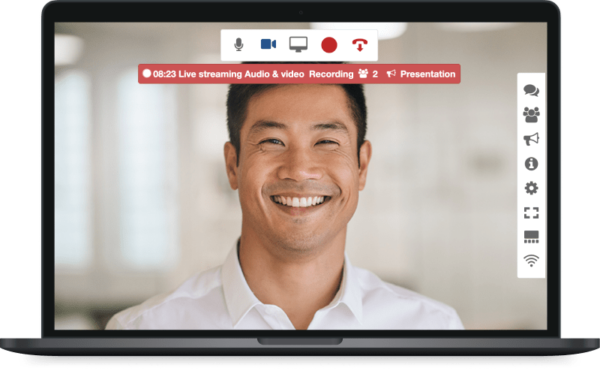 This is where the software tools will do their job.
This is where the software tools will do their job.
Basically, you’ll need the help of software solutions in three key areas:
- Record: recording your show. Digitizing the audio data from your microphone to a distributable format.
- Edit: edit the recorded data so it becomes a coherent, presentable podcast episode.
- Hosting: distributing the recorded and edited show to various podcast channels.
With TalkShoe as an all-in-one podcasting solution, you get all three functions in a single software, so you don’t have to worry about moving between different tools and importing or exporting files, which is often a hassle.
A common misconception when discussing how to start a podcast is that we upload the podcast directly to channels like Spotify or iTunes, but that isn’t actually the case. Instead, we’ll need a hosting service to host the audio files. The hosting service will then distribute the podcast to relevant channels.
TalkShoe is also a comprehensive podcast hosting service so you can record, edit, and publish your shows in a single dashboard.
Podcast RSS
Another key consideration when choosing your podcast software is the capability of generating an RSS feed. For podcasts, an RSS feed is crucial since podcast episodes are syndicated and distributed through RSS. Think of the RSS as your podcast show’s URL.
While it’s possible to code your own podcast feed, having a platform like TalkShoe that can automatically provide your podcast’s own RSS feed can take the hassle of coding your own from your podcast production process.
With the RSS code provided upon signing up to TalkShoe, your podcast is immediately available across multiple popular channels like Spotify, Apple Podcast/iTunes, and more. You don’t need any programming knowledge and can focus on what matters: your show’s content.
Live Podcasting
In this day and age where Zoom is the norm, live podcasting is now a popular thing, and if you plan to host live episodes, you’ll need to get the right software solution that will enable you to do so.
TalkShoe offers a live virtual studio, allowing you to invite guests and co-hosts to your live podcasts easily via a functional video conferencing function. Your guests and/or co-hosts can easily join the live podcast from any device, and you can easily invite guests via email, SMS, or even by simply sending your virtual studio’s URL.
Within the virtual studio, you can start and stop recording seamlessly. This is useful in online real-time recording situations since this means you can pause the show when there are any delays or issues with your guest’s connection, and resume the show again when you are ready to record.
Video Recording
While there are many purists that would argue that podcasts should be audio-only, we can’t deny the fact that many popular podcasts have successfully cross-list the podcast videos in video formats on YouTube and other platforms.
If you want to do this, again, you’ll need a software solution that allows you to also record videos. TalkShoe not only lets you record video along with your audio data but also directly live broadcast your episode to YouTube. This is a great way to expand your audience.
Marketing Tips for Your Podcast
We all know one of the biggest challenges in running a podcast show is how to market your show to attract more listeners.
Here are a few actionable tips you can try:
Optimize episodes with strong keywords
Carefully consider what words and phrases your potential listeners would type into a Google search or the search bar of Spotify, iTunes, or other podcast streaming services.
Use these keywords in your title and show description. Refer back to the naming section above on how to create unique podcast names that are also optimized for search keywords.
Optimize your show’s description
Your show’s and episodes’ descriptions will be the main reason potential listeners click (or don’t click) and listen to the show. So, it’s crucial to write descriptions that are attractive for your listeners, but at the same time only giving just enough information to leave them hanging. Don’t forget to include your target keywords and relevant links.
Leverage social media
Fairly obvious, social media is where everyone is nowadays, so it would only make sense to market your podcast on key social media channels like Facebook, Instagram, and Twitter. Also, don’t underestimate LinkedIn especially if your podcast is targeting professionals and businesses.
Be active on your social media accounts, and use the paid promotion options strategically.
Include show notes and transcriptions
Beyond your episode descriptions, consider including show notes or even full transcriptions of your show. A full transcript can actually be useful for SEO, and services like TalkShoe can help in this aspect by automatically generating a transcript.
Cross-promote your show
Don’t treat other podcasts as competitors, but reach out to them and find opportunities for collaborations and cross-promotions. Be a guest on other shows, and recommend other podcasts in your show and vice versa.
Closing Thoughts
By following the tips and tricks we’ve shared above, you are now ready to create a successful podcast and attract a lot of listeners.
While planning and building a successful podcast takes patience and practice, platforms like
TalkShoe can give you all the help you’ll need throughout the exciting journey. Our community-building podcast platform has all the essential features you’ll need: free unlimited storage, automated RSS feed generation, all-in-one recording and editing functions.
Your voice is literally just episodes away from being heard by your listeners.

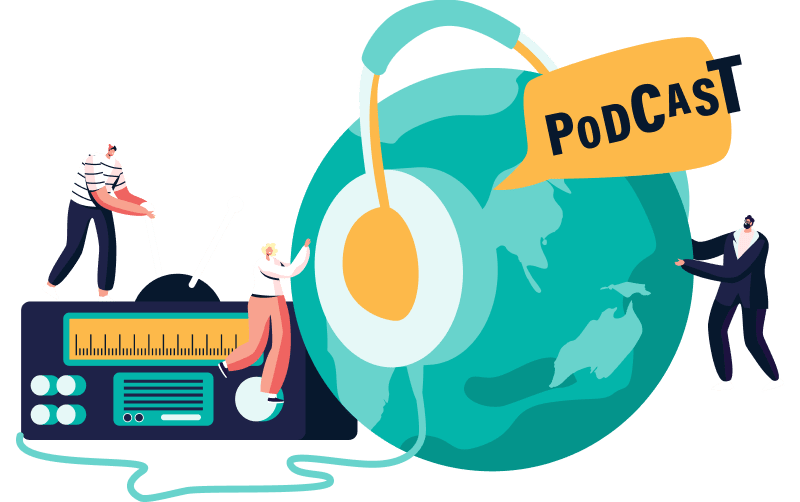
 As we know, podcasts are rapidly growing as a medium in recent years. In 2018 Apple and
As we know, podcasts are rapidly growing as a medium in recent years. In 2018 Apple and  Why do you want to start a podcast in the first place?
Why do you want to start a podcast in the first place? This is where the software tools will do their job.
This is where the software tools will do their job.